Boojho and Paheli performed experiments taking similar bulbs and cells but two different solutions A and B as shown in Fig.14.1.
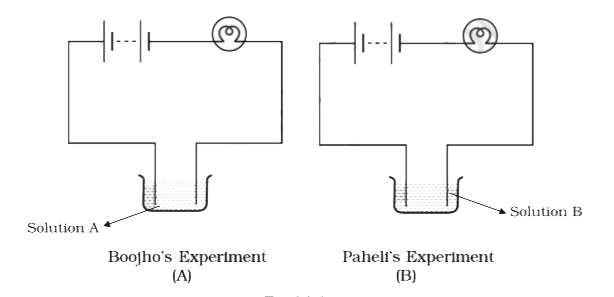
They found that the bulb in the setup A glows more brightly as compared to that of the setup B. You would conclude that.
higher current is flowing through the circuit in setup A
higher current is flowing through the circuit in setup B.
equal current is flowing through both the circuits.
the current flowing through the circuits in the two setups cannot be compared in this manner.
The correct Answer is:A
The current through the solution in the setup B could be weak and therefore unable to make the bulb glow brightly. However, the current is strong enough through the liquid in set up A for the bulb to glow brightly. Hence, the higher current is flowing through the circuit in setup A.
Topper's Solved these Questions
- CHEMICAL EFFECTS OF ELECTRIC CURRENT BOOK - NCERT EXEMPLARCHAPTER - CHEMICAL EFFECTS OF ELECTRIC CURRENT EXERCISE - VERY SHORT ANSWER QUESTIONS ( FILL IN THE BLANKS)
4 Videos
- CHEMICAL EFFECTS OF ELECTRIC CURRENT BOOK - NCERT EXEMPLARCHAPTER - CHEMICAL EFFECTS OF ELECTRIC CURRENT EXERCISE - VERY SHORT ANSWER QUESTIONS
3 Videos
Similar Questions
Paheli connected two bulbs to a cell as shown in Fig. 12.8.
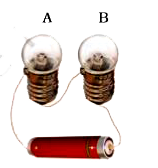
She found that filament of bulb B is broken. Will the bulb A glow in this circuit? Give reason.
View SolutionA tester is used to check the conduction of electricity through two liquids, labelled A and B. It is found that the bulb of the tester glows brightly for liquid A while it glows very dimly for liquid B. You would conclude that
(i) liquid A is a better conductor than liquid B.
(ii) liquid B is a better conductor than liquid A.
(iii) both liquids are equally conducting.
(iv) conducting properties of liquid cannot be compared in this manner.
View Solution
Knowledge Check
A tester is used to check the conduction of electricity through two liquids, labelled A and B. It is found that the bulb of the tester glows brightly for·liquid A while it glows very dimly for liquid B. What conclusion would you draw?
Aliquid A is a better conductor than liquid B.Bliquid Bis a better conductor than liquid A.Cboth liquids are equally conducting.Dconducting properties of liquid cannot be compared.A tester is used to check the conduction of electricity through two liquids, labelled A and B. It is found that the bulb of the tester glows brightly for·liquid A while it glows very dimly for liquid B. What conclusion would you draw?
Aliquid A is a better conductor than liquid B.Bliquid B is a better conductor than liquid A.Cboth liquids are equally conductingDconducting properties of liquid cannot be compared in this manner.An experiment was carried out using the apparatus shown below:

Liquid 'X' is an aqueous solution of concentration 1 mol/dm3. Which substance would cause the bulb to glow the brightest?AAmmoniaBEthanoic acidCSugarDSulphuric acid
In a common emitter transistor circuit, a bulb B and a volmeter V are connected as shown in Fig.What change would take place in bulb B and volmeter V when the value of resistance R is increased?
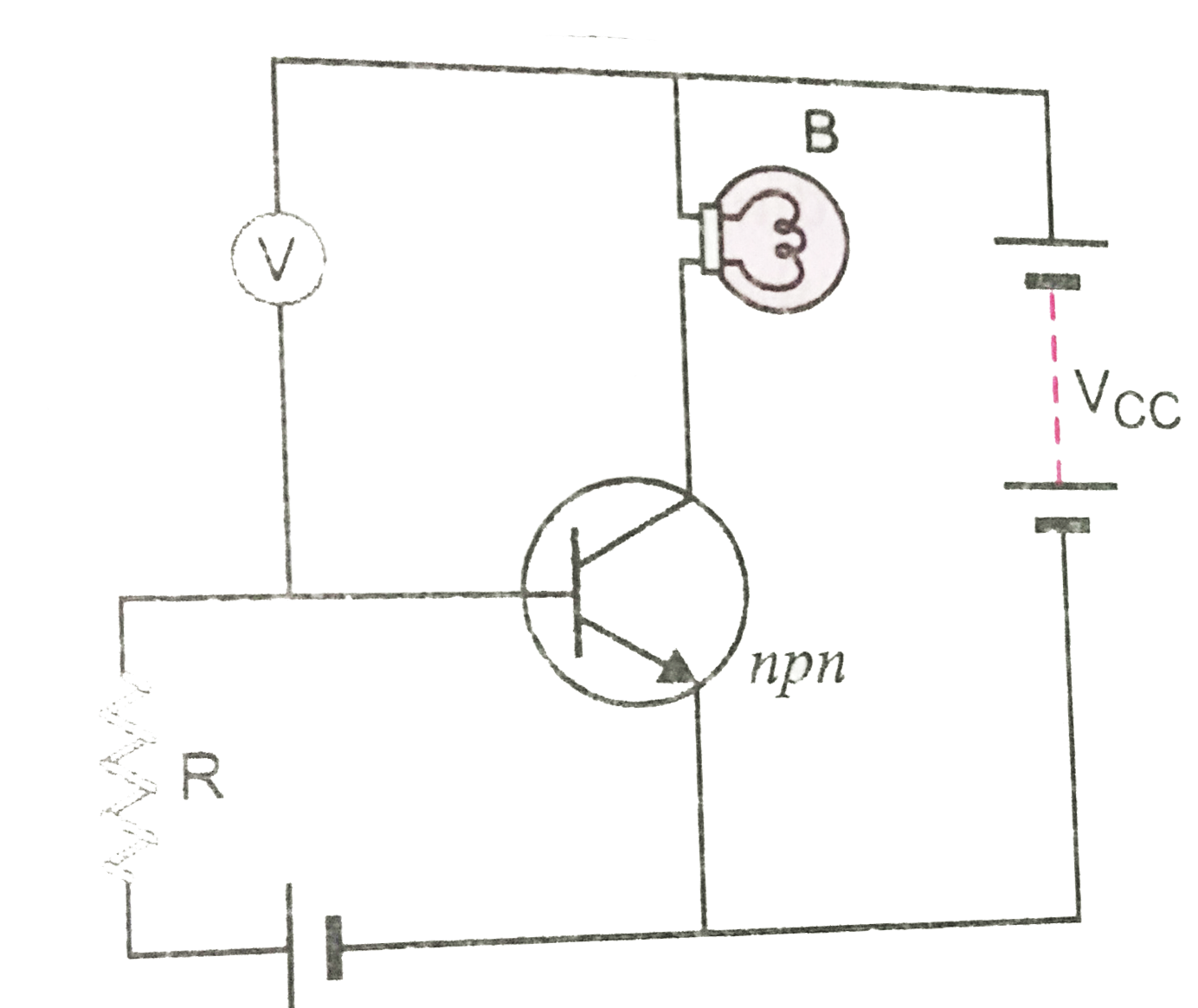
View SolutionThe variation of potential difference V with length l in case of two potentiometers A and B is as shown in Fig. Which one of these two will you prefer for comparing emfs of two primary cells ?
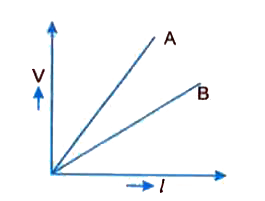
View SolutionPaheli set up an experiment using liquid A in the beaker as shown in Fig. 14.4. She observed that the bulb glows. Then she replaced the liquid A by another liquid B. This time the bulb did not glow. Boojho suggested replacing the bulb by an LED. They observed that the LED glows. Explain.
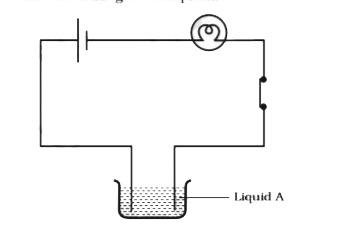
View SolutionB1,B2andB3 are three identical bulbs connected as shown in (fig. 3.46). When all the three bulbs glow, a current of 3A is recorded by the ammeter A.
(i) What happens to the glow of the other two bulbs when the bulb B1 gets fused ?
(ii) What happens to the readings of A1,A2,A3andA when the bulb B2 gets fused ?
(iii) How much power is dissipated in the circuit when all the three bulbs glow together ?
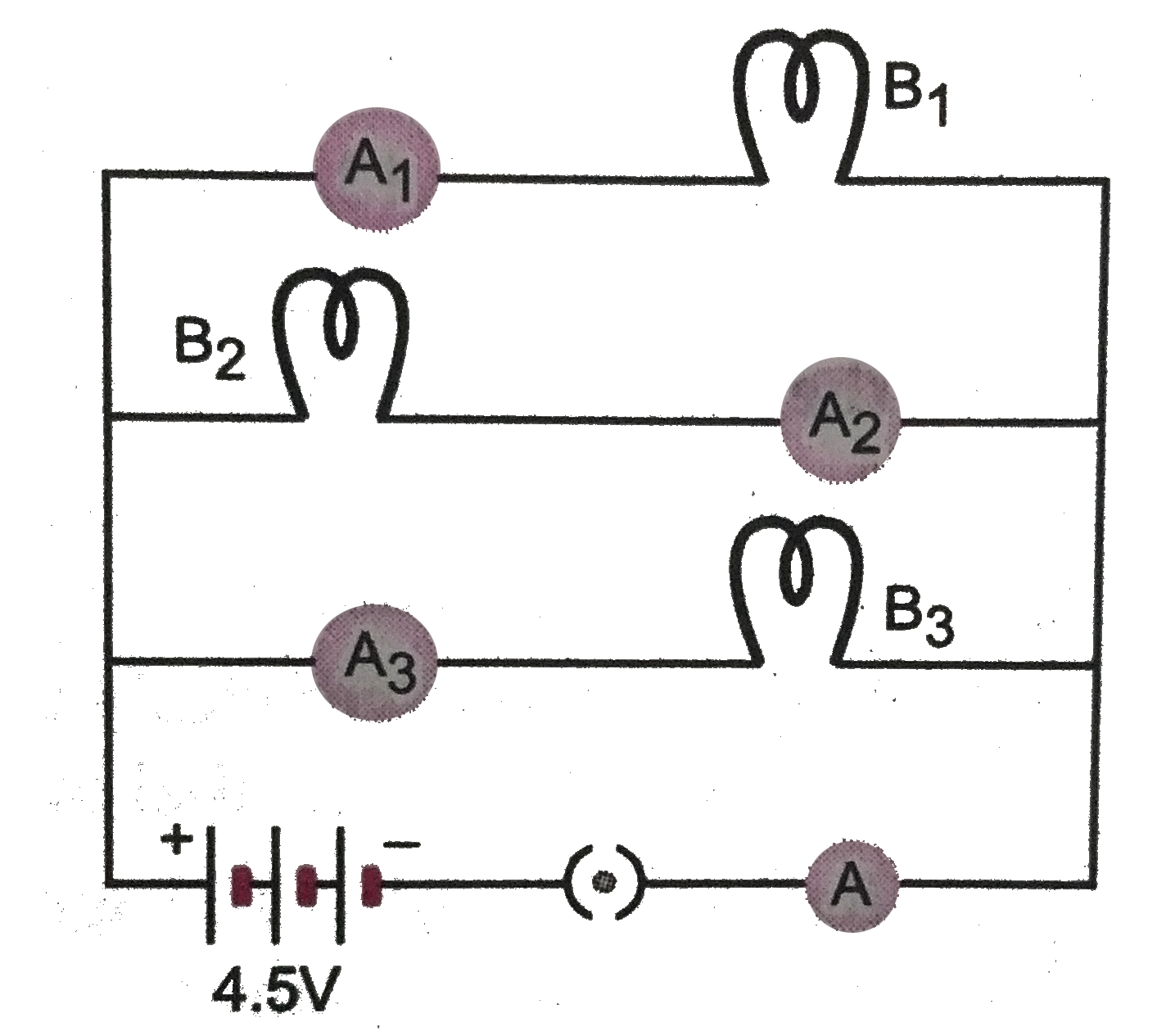 .
.
View SolutionThree different electrolytic cells A, B and C are connected in separate circuits. Electrolytic cell A contains sodium chloride solution. When the circuit is completed, a bulb in the circuit glows brightly. Electrolytic cell B contains acetic acid solution and in this case the bulb in the circuit glows dimly. The electrolytic cell C contains sugаr solution and the bulb does not glow. Give a reason for each of these observations.
View Solution
